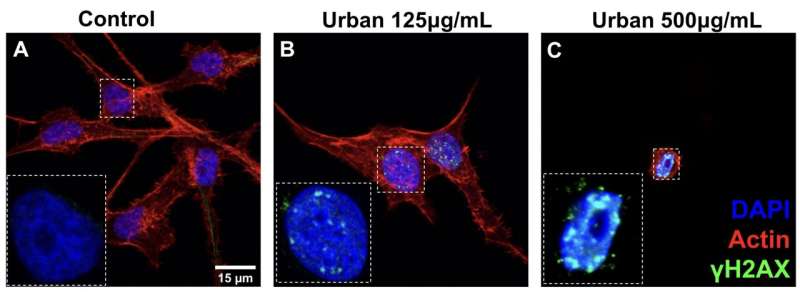This article has been reviewed according to Science X's editorial process and policies. Editors have highlighted the following attributes while ensuring the content's credibility:
fact-checked
peer-reviewed publication
proofread
Cadmium and particulate matter toxicity in a bronchial epithelial cell model

Particulate matter causes health problems for those who inhale the fine droplets and particles, but the chemical composition of the mixture matters—and can vary widely across space and time.
Lydia Contreras and colleagues have characterized the consequences of varying levels of exposure to three chemically distinct particulate matter mixes, sourced from the National Institutes of Standards and Technology (NIST), in a human bronchial epithelial cell model. Following exposures, the authors measured changes in gene expression and cell morphology.
The results of the study are published in the journal PNAS Nexus.
NIST's "urban" and "fine" particulate matter mixes, which were collected in St. Louis, Missouri, and Prague, Czech Republic, respectively, induced significant changes in gene expression. Particulate matter collected from a diesel engine produced fewer changes. Higher exposures caused more significant changes. Different particulate matter mixes also induced different morphological changes, with exposure to the urban and fine mixtures causing cells to become smaller and more rounded than exposure to the "diesel" mix. These small rounded cells had signs of significant DNA damage.
Next, the authors worked to identify which chemicals were responsible for these changes. Cadmium levels varied between the three mixes tested. Further, when the diesel mix was supplemented with cadmium, it induced changes similar to that of the urban and fine mixes. This indicated that cadmium is at least partially responsible for differences in DNA damage and toxicity between the mixtures, according to the authors.
More information: Sean M Engels et al, Particulate matter composition drives differential molecular and morphological responses in lung epithelial cells, PNAS Nexus (2023). DOI: 10.1093/pnasnexus/pgad415





















